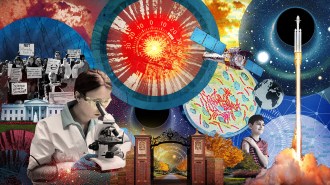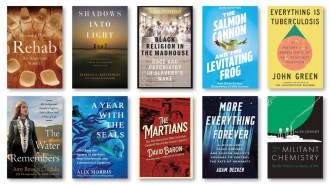Cancerous clams and other sci-fi fodder
By Eva Emerson
- More than 2 years ago

Fans of science fiction will find a few items in this issue sure to trip the imagination. First, Tina Hesman Saey describes a discovery akin to something out of Alien: roving cancer cells that move from victim to victim, sneaking into others’ bodies to produce more of themselves. Saey, a lover of science fiction herself, calls it “cancer as parasite” or — as one researcher put it — extreme out-of-body metastasis.
Of course, this contagious cancer attacks clams, not people. But biologically, it’s pretty far-out. The leukemia-like disease is not, as was initially thought, caused by a virus. Jumping genes — bits of DNA that move around a chromosome, embedding themselves in places that can trigger cancers — may play some role. These genes revealed that clams from Maine to Maryland have the exact same malignancy — and that the cancer cells are genetically distinct from the clams’ own cells.
It’s the third example of contagious cancer in the animal world, but it’s the only one with no apparent direct contact between the carriers. What if there are other, similar types of cancers that we don’t know about? “That’s scarier to me than any virus,” says Saey. And good fodder for a thriller.
Also seemingly out of the pages of a novel: new drugs of abuse, designed by chemists to mimic illicit drugs but to evade legal restrictions, with some scary effects, as science writing intern Kate Baggaley describes. Or, see Christopher Crockett’s report about the effort to trace the origin of Earth’s water, which apparently was imported from some extraterrestrial source.
For a taste of actual sci-fi, see my brief review of the movie Ex Machina. It’s no Star Wars, but it does what some of the best science fiction does: uses futuristic technology to explore bigger, broader issues involving humans and society. It also offers a bit of an escape.







